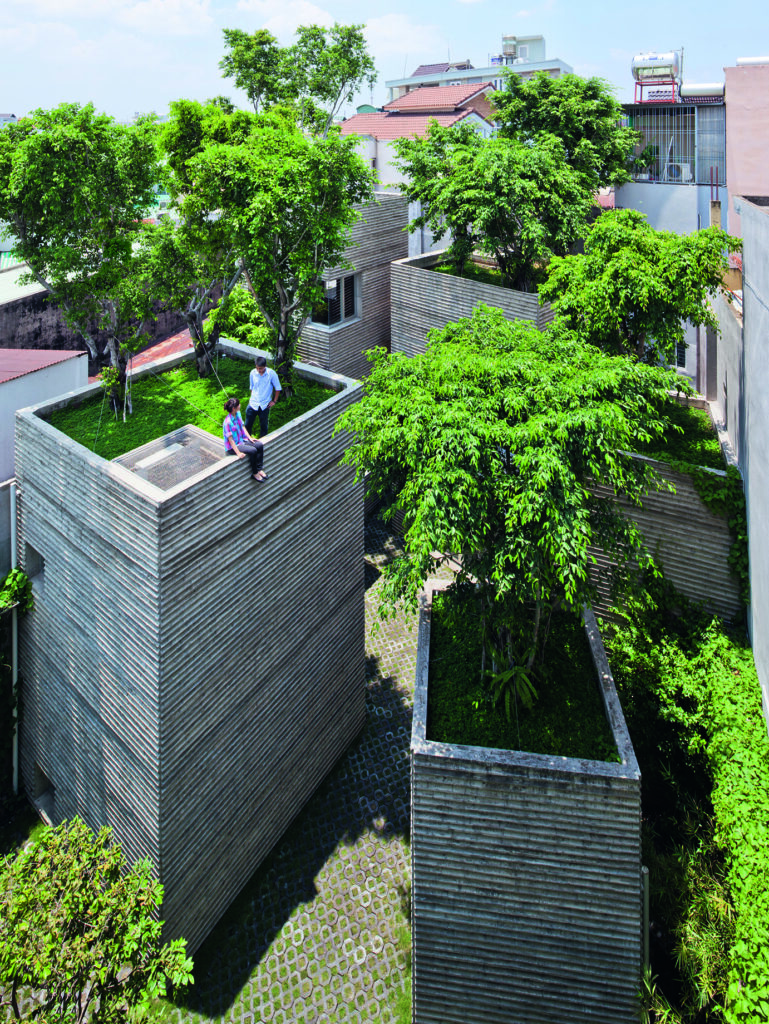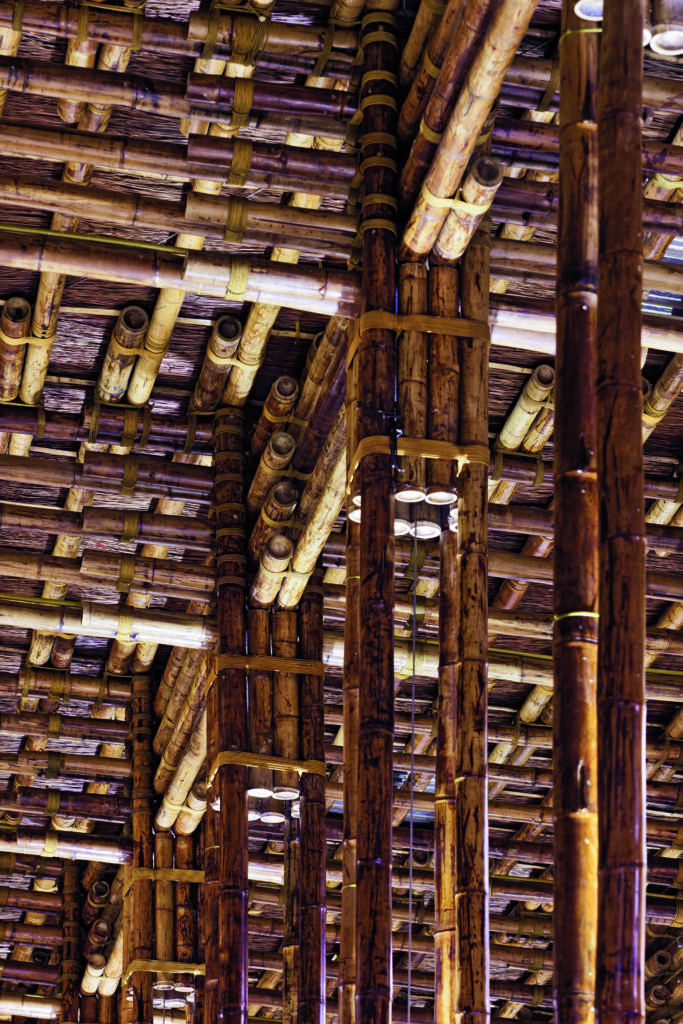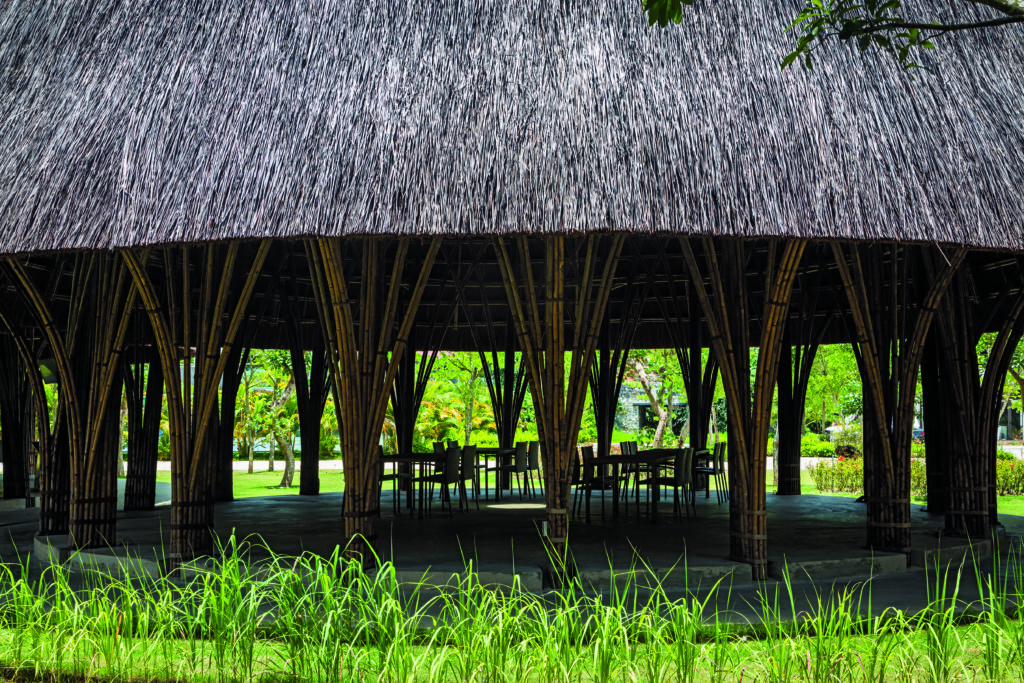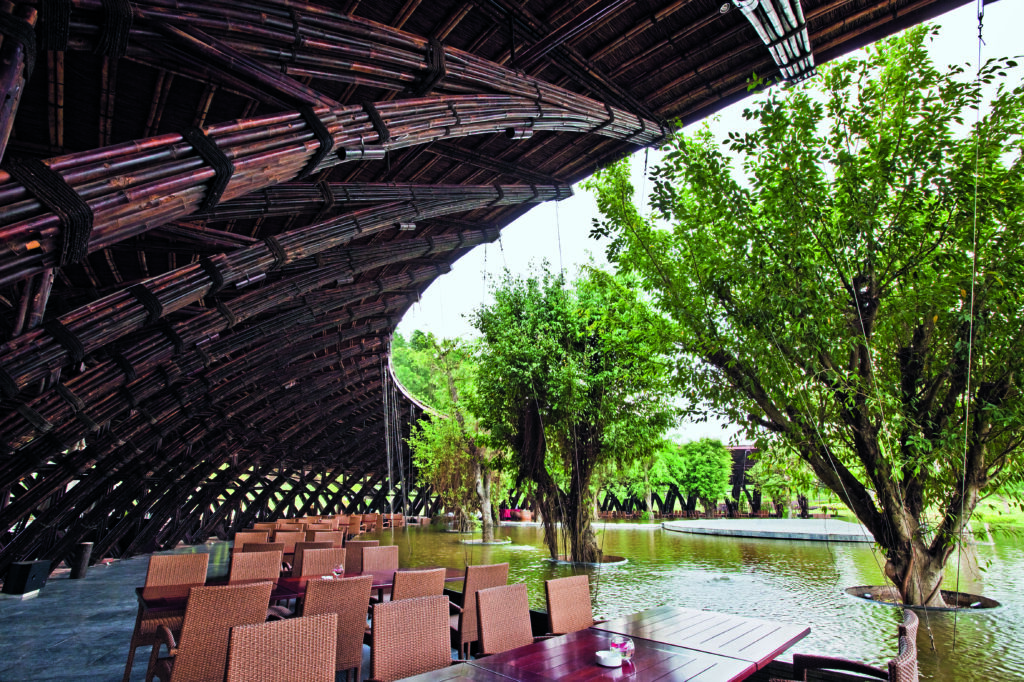
The world is moving toward sustainable development in an attempt to mitigate the climate catastrophe and to act in the interest of health and well-being while redefining resources. As architects take the leading role in guiding the industry toward net-zero carbons and a healthful environment, Vietnamese architect Vo Trong Nghia (b. 1976) is becoming increasingly relevant. He uses natural materials like no one else, and his expression of his own national identity – merging traditional Vietnamese building methods with contemporary design, bringing together past and future—is admirable. His projects are human and humane; and his hands, his tools—bamboo, timber, earth, brick, trees, vines, stones—are utilized most elegantly. Now, with the first published monograph that includes all of his projects, it is time to revisit the contemporary vision of his notable architecture which is both sustainable and spiritual.
The publication Building Nature is comprised of two volumes, one of which focuses exclusively on bamboo, and the other on the architect’s famed green buildings. Trong Nghia grew up in a small village in Vietnam’s Quang Binh province, near the border of North and South Vietnam. He had seen death and destruction during the War. It was then, at an early age, that he dreamt of becoming an architect, rebuilding his country, and harmonizing buildings with nature. He studied architecture at the Nagoya Institute of Technology and then at the University of Tokyo, and established his firm in Vietnam in 2006. “Architecture,” he says, “is about the quality of space and details, a matter of the scale of spaces, of the quality of light and materials.” From the very beginning he sought to formulate new architectural language in Vietnam, his home.
Trong Nghia’s architecture is the pure representation of his belief in spiritual living with nature according to Buddhism. He meditates, and even spent two years in a Buddhist monastery in Myanmar. Moral concepts stand at the core of his architectural vision.
One of my favorite projects, ‘House for Tress,’ in Ho Chi Minh, is a housing structure divided into five sections, each designed as a device, like pots, for planting trees on its rooftop. The spaces between them are filled with gardens that surround the tenants with green, because in Vietnam, cities typically have minimal nature. The notion that one has to live engaged with nature stands at the core of Trong Nghia’s vision, rooted in his belief in creating a peaceful society according to Buddhism. His commitment to its religious teaching is resolute, as he believes that the power of enlightenment and spiritual engagement result in better architecture. In his projects in bamboo, I loved the Son La Restaurant in San La, Vietnam, where he used local bamboo which grows high and is able to create dozens of columns and beams which makes you feel as if you are standing in a bamboo forest. It is hard to believe that this project was built on a modest budget of $600 per square meter.
Trong Nghia builds public buildings, residential homes, towers, hotels, restaurants. The key element which runs through all of his projects, is the love for nature, forests, mountains, and the desire to allow people to live with nature and in nature. But there is also a spectacular, sensible means of allowing the materials, tiles, bricks, and wood, to propose perfect order. His interiors are well composed, filled with light, air, solid volumes, and precise compositions. No wonder he uses so much Danish furniture—they are the perfect fit for this oeuvre. The new publication allows us to view this spiritual architecture at its best.

Hiroyuki Oki

joints.
Hiroyuki Oki






